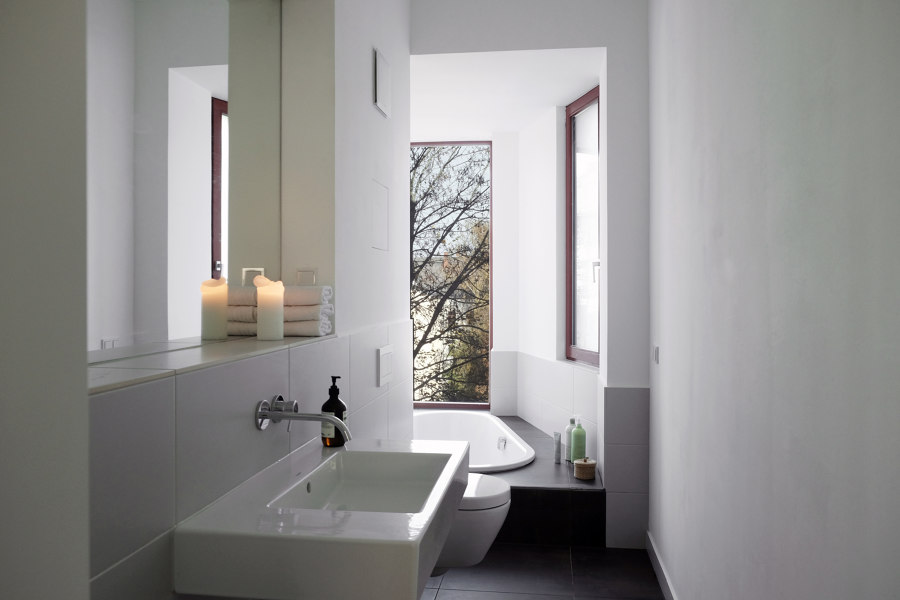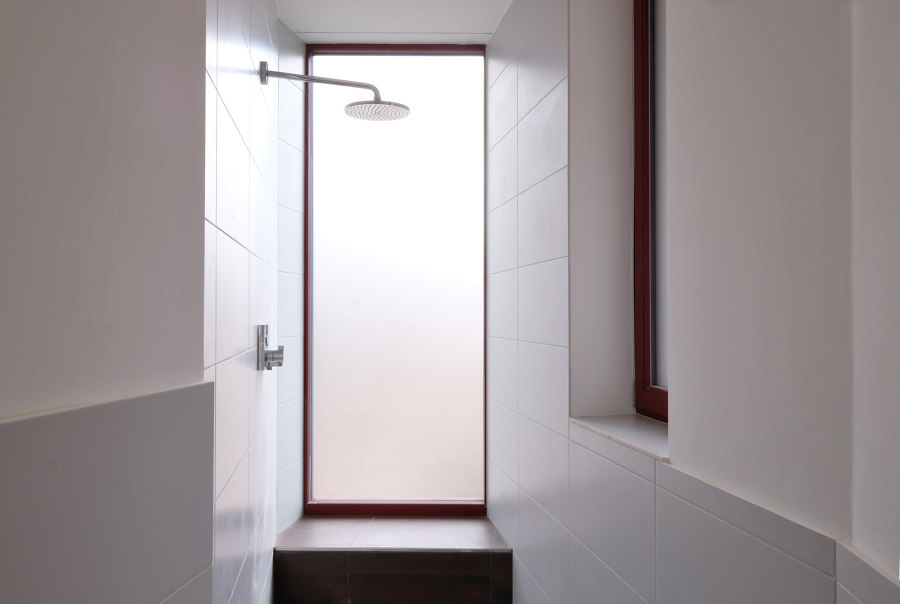
Fotografo: Steffen Spitzner
Casa Rossa in Chemnitz: Sustainability in refurbishment projects - implemented with Mosa tiles
The Sonnenberg quarter in Chemnitz is a largely preserved Wilhelminian quarter with a lot of charm. Number 41 - the "Casa Rossa", named after the red tiles of the façade - stood empty for over 30 years and was left to decay. This only changed when the Munich architects Annette Fest and Christian Bodensteiner the house. Their goal was to preserve or reuse the building fabric as far as possible by using simple means. Its qualities were to be brought out and at the same time the building was to be transferred into the present day.
Mosa tiles played an important role in this approach. Christian Bodensteiner has known the manufacturer for many years and enjoys working with the tiles. "Mosa delivers beautiful material and meets high sustainability standards. That fits in with our philosophy."
Annette Fest and Christian Bodensteiner have completed many projects in existing buildings and are detail-oriented in the best sense of the word. It is important to them that the materials are coherent in themselves, that they are durable and that their materiality and colour tones go well together
The façade of Casa Rossa was redesigned with the exposed bricks in historic formats. Inside, the team opted for Terra Maestricht floor tiles in kitchens and bathrooms. The walls were designed with Murals tiles. Christian Bodensteiner: "The slightly reddish tone of the Terra Maestricht tiles creates an ideal interplay with the bricks. For the walls, we deliberately chose the Murals Blend because it has no structure of its own.”
For Christian Bodensteiner, the design component is also a sustainability component, because a timeless tile can still please in 20 years. That is why his approach to sustainability comprises three components: sustainable manufacturing, product quality and design. Aspects that Mosa has been fulfilling for a long time.
Besides product quality, Christian Bodensteiner also emphasises the good support with a central contact at Mosa.
All in all, Casa Rossa is a convincing example of a sustainable and future-oriented building. The floor plan of the flats was designed to meet the demand for larger flats in Chemnitz. But here, too, the architects thought about future use: if necessary, walls can easily be drawn in to create additional rooms.
The overall concept of Casa Rossa not only convinces builders and tenants. bodensteiner fest has already won a total of eight different architecture awards, including several sustainability awards, with the project.
The architects have turned Casa Rossa into a gem that underlines their conviction in working with existing buildings. "Refurbishments have great potential if you get to the bottom of the peculiarities and special features. They have aesthetic potential to make something new out of an object while at the same time incorporating its history. But they also challenge us to find new ways that we probably wouldn't have thought of otherwise. Going down such paths with a partner like Mosa always leads to outstanding results," says Christian Bodensteiner.
Architect
bodensteiner fest

Fotografo: Steffen Spitzner

Fotografo: Steffen Spitzner

Fotografo: Steffen Spitzner

Fotografo: bodensteiner fest

Fotografo: Steffen Spitzner

Fotografo: bodensteiner fest

Fotografo: bodensteiner fest

Fotografo: bodensteiner fest

Fotografo: Steffen Spitzner










